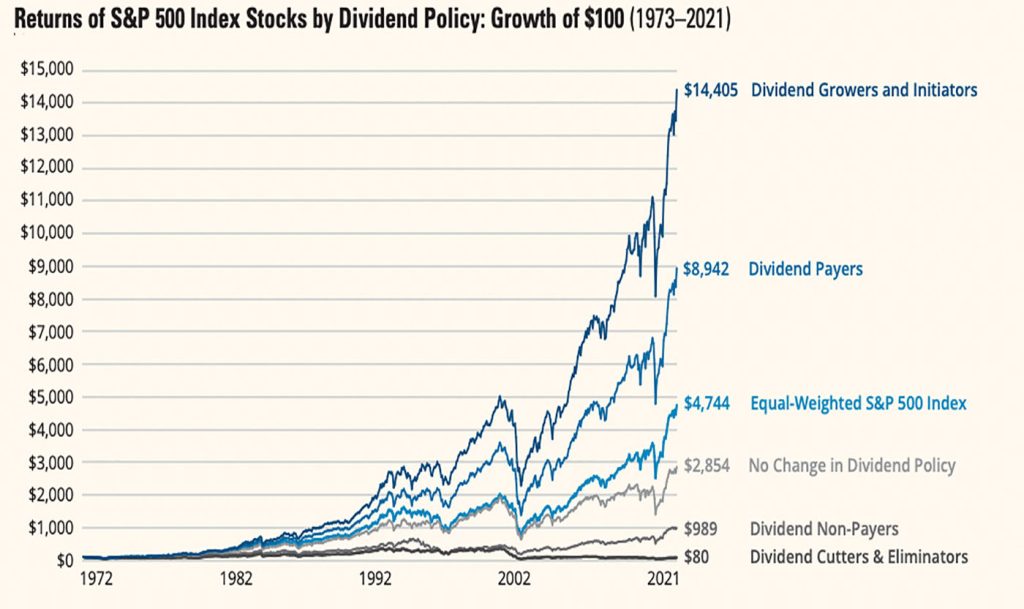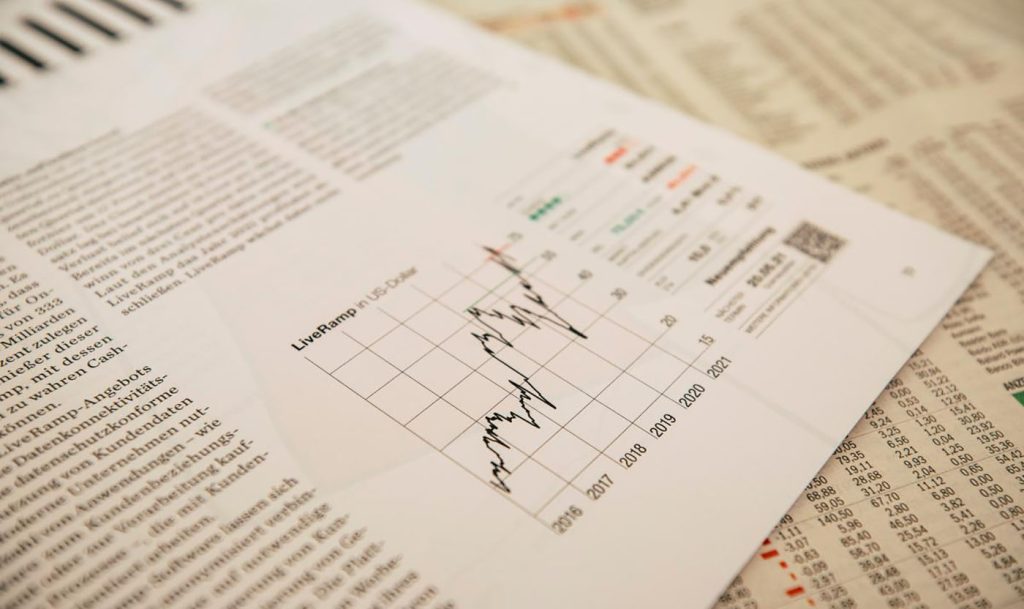As we navigate the complexities of the financial markets in 2024, it’s clear that the landscape for investors continues to evolve. While some may focus on short-term gains, others, like myself, prefer to take a more steady and consistent approach to investing—one that builds wealth over time. One strategy that has proven particularly attractive is dividend investing.
Dividend stocks have become an essential component of many long-term investment portfolios, and for good reason. Not only do they provide a steady stream of income, but they also offer a level of stability and growth potential that is hard to match with other asset classes. In this article, I’ll dive into the reasons why dividend stocks are an excellent choice for long-term investors, how to select the right ones, and the best strategies to maximize your returns.
1. What Are Dividend Stocks?
Before we dive deeper into why dividend stocks are so appealing, let’s first define what they are. A dividend stock is simply a share of a company that pays out a portion of its earnings to shareholders in the form of dividends. These payments are typically made quarterly, though some companies pay them monthly or annually.
The key benefit of dividend stocks is that they provide regular income, making them an attractive choice for investors who want to build wealth steadily over time. Unlike growth stocks, which rely on capital appreciation (the increase in stock price), dividend stocks give you a tangible, ongoing return on your investment.
2. The Key Benefits of Dividend Stocks for Long-Term Investors
In 2024, the investment landscape is marked by uncertainty. With inflation concerns, interest rate fluctuations, and geopolitical tensions, many investors are seeking safer, more reliable options for building wealth. Dividend stocks stand out in this environment for several reasons:
a. Steady Income Stream
The most obvious benefit of dividend stocks is the consistent income stream they provide. For long-term investors, this can be a game-changer. Whether you’re looking to reinvest the dividends or use them as a source of passive income, the predictable nature of dividend payouts offers a level of stability that’s hard to find in other investments.
I personally find that having a regular income from dividends helps reduce the stress that comes with market volatility. When the stock market dips, dividend payments can cushion the blow, providing a steady flow of cash that doesn’t depend on stock price fluctuations.
b. Compounding Returns Through Dividend Reinvestment
One of the most powerful advantages of dividend investing is the ability to reinvest dividends. This process is often referred to as dividend reinvestment and is where the magic of compound growth happens. Rather than simply receiving cash payouts, you can reinvest your dividends to purchase additional shares of the same company. Over time, this leads to exponential growth, as those new shares generate even more dividends, which are then reinvested.
Let me illustrate with a simple example: Imagine you invest $1,000 in a dividend stock with a 4% annual dividend yield. Over the course of a year, you’d receive $40 in dividends. If you reinvest those dividends, you’ll have more shares the following year, and your dividends will increase as a result. This compounding effect becomes even more powerful the longer you let it work its magic, especially if the company consistently raises its dividend payments.

c. Lower Risk Profile
While no investment is completely risk-free, dividend stocks tend to have a lower risk profile than non-dividend-paying stocks, especially when it comes to volatility. Companies that pay dividends are often more established and financially stable, which means they are less likely to engage in speculative behaviors or make risky moves that could jeopardize their business.
In times of market uncertainty, dividend stocks tend to outperform growth stocks, which can experience sharp declines during market corrections. Investors looking for stability will find comfort in companies with a track record of paying reliable dividends, as these companies are often better equipped to weather economic storms.
d. Inflation Hedge
In an environment like today’s, where inflation concerns are top of mind, dividend stocks can act as an effective hedge against inflation. Many dividend-paying companies, particularly those in sectors like utilities, consumer staples, and real estate, have a history of increasing their dividend payments in line with or above inflation. This means that even if inflation causes the cost of living to rise, your dividend income can grow as well, helping maintain your purchasing power over time.
e. Tax Advantages for Long-Term Holders
In many countries, including the United States, dividends are taxed at a lower rate than regular income, which can be advantageous for long-term investors. Long-term capital gains are generally taxed at favorable rates, making dividend stocks an attractive option for those seeking to minimize their tax burden while maximizing their returns.
However, it’s important to check the tax rules specific to your country, as tax treatment of dividends can vary. Still, in general, holding dividend stocks in tax-advantaged accounts like an IRA or 401(k) can further enhance your returns over time.
3. How to Select the Right Dividend Stocks
Selecting the right dividend stocks is key to building a successful long-term portfolio. While dividend stocks can offer consistent returns, not all of them are created equal. Here are some important factors to consider when choosing dividend stocks for your portfolio:
a. Dividend Yield
The dividend yield is the annual dividend payment expressed as a percentage of the stock price. While it’s tempting to chase high dividend yields, this strategy can be risky. A very high yield may signal that a company is struggling or that the stock price has dropped significantly, which could be a red flag. A sustainable dividend yield, typically between 2% and 6%, is generally a good sign that a company is financially healthy and committed to paying dividends.
b. Dividend Growth History
A strong dividend growth history is a good indicator of a company’s ability to maintain or increase its dividends over time. Companies that have consistently raised their dividends for decades, such as those in the Dividend Aristocrat or Dividend King categories, are often seen as reliable and financially stable.
These companies have proven their ability to weather economic cycles, and their dividend increases often outpace inflation, which is critical for preserving purchasing power in the long run.
c. Payout Ratio
The payout ratio is the percentage of earnings a company pays out as dividends. A high payout ratio may suggest that the company is not reinvesting enough of its profits back into its business, which could limit future growth. On the other hand, a low payout ratio might indicate that the company could afford to increase its dividend payments in the future.
For most companies, a payout ratio between 40% and 60% is ideal. This allows the company to reinvest enough of its profits to fuel future growth while maintaining a stable dividend for shareholders.
d. Company’s Financial Health
Investors should always assess a company’s financial health before investing in its dividend stock. Look at key metrics like earnings growth, debt levels, and cash flow. A company with low debt, steady earnings, and strong cash flow is more likely to be able to sustain its dividend payments in the long run.
e. Sector and Industry Considerations
Certain sectors tend to be more reliable when it comes to paying dividends, such as utilities, consumer staples, and healthcare. These industries have stable cash flows and often provide products or services that are always in demand. When building a diversified portfolio, consider investing in a mix of dividend stocks across different sectors to reduce risk.
4. Strategies for Maximizing Dividend Stock Investments
While dividend stocks are an excellent choice for long-term investing, there are a few strategies I’ve found particularly effective for maximizing their potential:
a. Diversification
It’s important to diversify your dividend stock holdings across multiple sectors and industries. By doing this, you reduce the risk of a single sector underperforming, which could significantly impact your income stream. Diversification also allows you to capture growth in different parts of the economy, improving the overall stability of your portfolio.
b. Reinvest Dividends
As mentioned earlier, reinvesting your dividends is one of the most powerful ways to grow your wealth over time. If you’re not relying on the income from your dividends, set up a dividend reinvestment plan (DRIP) to automatically reinvest your earnings into additional shares. This strategy ensures that you’re compounding your returns over the long term.
c. Focus on Long-Term Growth
Remember, the goal of investing in dividend stocks is long-term wealth creation. Don’t focus too much on short-term price movements. Instead, pay attention to the consistency of dividend payments and growth over time. Patience is key to achieving success in dividend investing.

d. Use Dividend ETFs and Funds
If you’re looking to simplify the process of investing in dividend stocks, consider using dividend ETFs or mutual funds. These funds invest in a diversified basket of dividend-paying stocks, which provides exposure to multiple companies without the need for individual stock picking. ETFs like the Vanguard Dividend Appreciation ETF (VIG) or the iShares Select Dividend ETF (DVY) are excellent options for small investors.
5. Resources for Dividend Investors
To further enhance your dividend investing strategy, here are some valuable resources to help you find and research high-quality dividend stocks:
- Dividend.com: Provides detailed information on dividend yields, growth, and sustainability.
- Seeking Alpha: A popular platform for in-depth analysis and discussions on dividend stocks.
- Yahoo Finance: A reliable source for tracking dividend stocks and their performance.
- Morningstar: Offers research on dividend-paying funds, stocks, and ETFs.
- The Motley Fool: A great source of stock recommendations and analysis, with a focus on dividend stocks.
- Simply Safe Dividends: A subscription service that helps investors identify the safest and most reliable dividend stocks.
In 2024, with the uncertainties in the broader markets and the growing appeal of passive income strategies, dividend stocks remain one of the best ways to build wealth for the long-term. They offer stability, compounding growth, and a reliable income stream—all qualities that make them an attractive choice for anyone looking to achieve financial freedom over time.
By selecting the right dividend stocks, focusing on quality companies with strong financial health, and reinvesting your dividends, you can steadily grow your wealth while benefiting from the advantages of dividend investing. Whether you’re new to the world of investing or a seasoned veteran, dividend stocks should undoubtedly be part of your long-term investment strategy.



